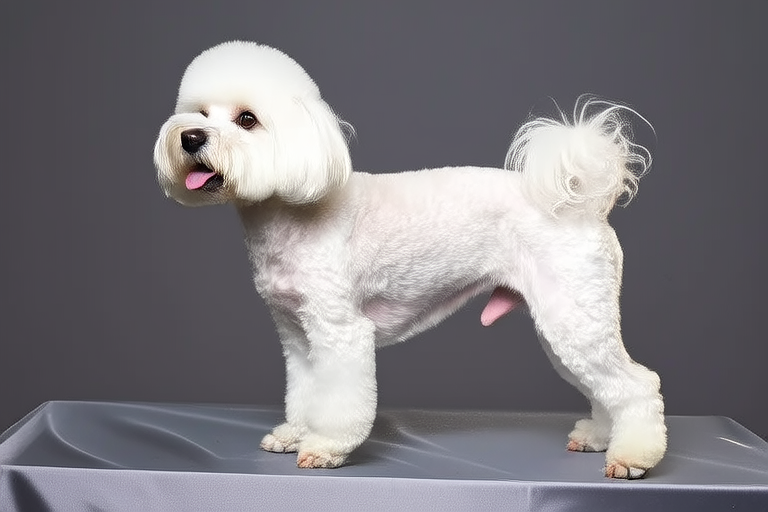The Genetic Factors Behind the Poodle’s Curly Coat
The poodle is renowned for its distinctive curly coat, which sets it apart from many other dog breeds. This article delves into the genetic factors responsible for the poodle’s curly coat, analyzing its structure and texture. It explores how this unique trait has influenced the breed’s history and popularity, compares and contrasts the poodle’s coat with other dog breeds, highlights grooming techniques suited for their coat type, and discusses the health benefits associated with proper care. Insights from recent scientific studies and expert opinions on the poodle’s coat genetics are also included.
Genetic Factors Responsible for the Poodle’s Curly Coat
The poodle’s curly coat is primarily attributed to a single gene mutation that affects the formation of keratin, a protein crucial for hair structure. This mutation leads to an overproduction of a specific type of keratin, resulting in the tight curls characteristic of the poodle’s coat. The mutation is autosomal dominant, meaning that only one copy of the gene is necessary for the trait to be expressed. This genetic factor explains why poodles have such curly coats, even when bred with other dog breeds.
Structure and Texture of the Poodle’s Coat
The poodle’s coat is dense and curly, with each hair growing in a spiral pattern. This structure provides the coat with its unique texture, which is soft to the touch but resilient against environmental factors. The curls can vary in size, depending on the poodle’s lineage and individual genetics. Standard poodles tend to have larger curls, while miniature and toy poodles have smaller, tighter curls. The coat’s texture is also affected by the amount of oil produced by the skin, which can make the coat either more or less shiny.
Influence on the Breed’s History and Popularity
The poodle’s curly coat has played a significant role in the breed’s history and popularity. Historically, poodles were used as water retrievers due to their waterproof coat, which protected them from cold water. Their intelligence and trainability further contributed to their success as working dogs. Over time, poodles became popular as companion animals, and their distinctive appearance made them stand out in shows and exhibitions. Today, poodles are among the most popular dog breeds worldwide, thanks to their intelligence, versatility, and unique coat.
Comparison with Other Dog Breeds
When compared to other dog breeds, the poodle’s coat stands out for its unique structure and texture. For example, the Afghan hound has a long, silky coat, while the bulldog has a short, smooth coat. The poodle’s curly coat is distinct from both of these, offering a combination of softness and resilience that is rare in other breeds. Additionally, the poodle’s coat does not shed as much as other breeds, making it an excellent choice for people with allergies or sensitivities to pet dander.
Grooming Techniques Suited for the Poodle’s Coat
Maintaining a healthy poodle coat requires regular grooming. Professional groomers often use specialized tools, such as slicker brushes and dematting combs, to remove tangles and mats. Owners can also use these tools at home to keep their poodle’s coat in good condition. Regular bathing, usually every four to six weeks, helps to remove dirt and oils from the coat. However, excessive bathing can strip the coat of its natural oils, so it’s important to use a gentle shampoo and rinse thoroughly. Some owners choose to trim their poodle’s coat into specific shapes, such as the classic ‘poodle cut,’ which involves leaving longer hair around the eyes and tail while trimming the rest of the body shorter.
Health Benefits Associated with Proper Care
Proper grooming not only keeps the poodle’s coat looking its best but also promotes overall health. Regular brushing helps to distribute natural oils throughout the coat, keeping it healthy and shiny. Bathing removes dirt and debris that could otherwise cause irritation or infection. Trimming prevents mats and tangles, which can lead to discomfort or pain if left untreated. Additionally, grooming provides an opportunity to check for any signs of illness or injury, allowing for early intervention if necessary.
Recent Scientific Studies and Expert Opinions
Recent scientific studies have shed light on the genetic factors behind the poodle’s curly coat. One study published in the journal Genetics identified the specific gene mutation responsible for the poodle’s coat. Another study, published in PLoS Genetics, explored the evolutionary history of the poodle’s coat, tracing its origins back to ancient times. Experts agree that the poodle’s coat is a result of both genetic and environmental factors, with the mutation playing a key role in determining the coat’s structure and texture.
Advice for Potential Owners
If you’re considering adding a poodle to your family, there are several things to keep in mind when it comes to maintaining a healthy coat. First, regular grooming is essential, so consider setting up a routine that works for you and your poodle. Second, be mindful of the products you use, choosing gentle shampoos and conditioners that won’t strip the coat of its natural oils. Third, pay attention to your poodle’s diet, ensuring they receive the nutrients they need for healthy skin and coat. Finally, don’t hesitate to consult with a professional groomer if you’re unsure about how to care for your poodle’s coat. With proper care, your poodle will have a beautiful, healthy coat that reflects their unique personality and charm.
